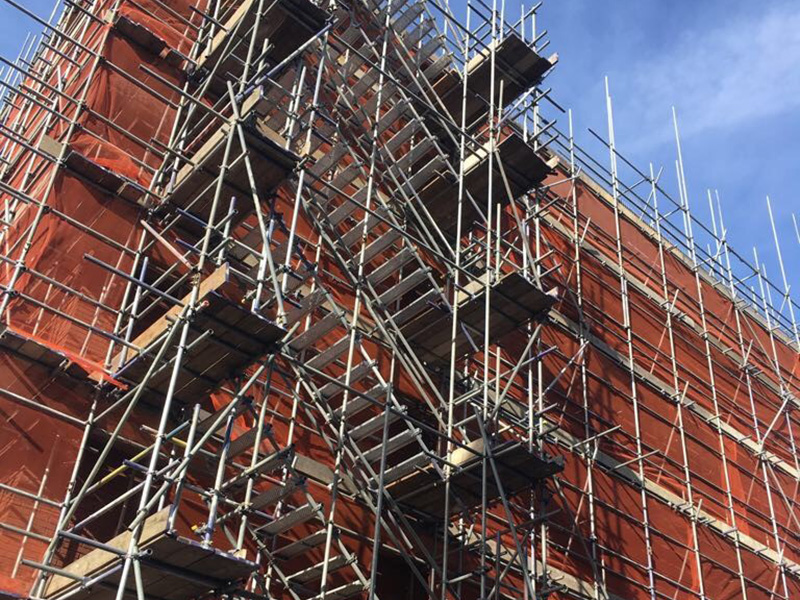Within today's rapidly evolving construction environment, commercial scaffolding have emerged as an indispensable asset for companies looking to improve safety and efficiency on their job locations. Whether it's towering skyscrapers to sprawling retail center renovations, efficient scaffolding solutions not just support the structural structure of a project but also promote a more secure working environment for crews. Understanding https://pagh-halsey.hubstack.net/maximizing-area-cutting-edge-support-options-for-urban-projects of scaffolding, the safety protocols implemented, and the compliance requirements is essential for any firm engaged in the building industry.
With the complexities of contemporary construction tasks, the selection of scaffolding can profoundly impact the overall effectiveness and safety of a build. Whether it involves balancing the logistical demands of a high-traffic business site or ensuring the stability and dependability of the support structure setup, having the appropriate knowledge can result in substantial improvements in productivity and project timelines. This piece will examine key elements of business scaffolding, from its function in boosting job site safety to the different forms on offer and the crucial security standards that need to be followed in the sector.
Comprehending Industrial Scaffolding
Industrial scaffolding is a temporary structure that bears workers and materials during construction, renovation, or upkeep projects in business settings. It offers essential access and guarantees safety for laborers working at heights, allowing for efficient execution of tasks that would otherwise be hard or inconceivable. This infrastructure is crucial for various types of establishments, from commercial complexes to shopping spaces, guaranteeing that projects can continue easily and without issues.
Different types of scaffolding can be used in business projects, including structural scaffolding, modular scaffolding, and suspended scaffolding. Each type is designed to meet specific needs determined by project scale, site conditions, and the nature of the work being performed. Selecting the appropriate scaffolding system is vital for improving workflow and enhancing accessibility, which ultimately leads to a successful project completion.
The importance of industrial scaffolding extends beyond mere access; it serves a major role in job site safety. A well-erected scaffold minimizes risks associated with working at heights, such as falls and injuries. Compliance with safety regulations and sufficient training for workers are essential aspects to make certain the scaffolding serves its purpose effectively. Understanding the various components and regulations surrounding commercial scaffolding helps businesses maintain elevated safety standards on job sites.

### Scaffolding Safety and Compliance
Safety measures and adherence to regulations are crucial components in scaffolding operations, particularly in business projects where dangers can significantly impact workers and overall productivity. Complying with strict safety regulations and standards is not merely a legal obligation but a critical aspect of maintaining an efficient job site. Making sure that all scaffolding setups meet local, state, and federal regulations reduces the likelihood of accidents and helps to create a secure work environment for all workers involved.
Regular inspections and risk assessments have an important role in scaffolding safety. Such assessments help to recognize potential hazards and ensure that scaffolding systems are erected and maintained correctly. Workers should be trained to recognize risks associated with scaffolding, such as collapse potential or faulty construction, allowing for proactive measures to be implemented. By promoting https://telegra.ph/Overcoming-Difficulties-Scaffolding-Resolutions-for-Complicated-Structures-04-23 of safety and vigilance, businesses can considerably reduce the number of incidents on site.
Furthermore, compliance with OSHA regulations is non-negotiable in the scaffolding industry. These regulations outline definite requirements for scaffolding design, assembly, and usage to protect workers from accidents and injuries. Companies must ensure that all crew members are knowledgeable with these regulations and that their work practices reflect compliance. Facilitating thorough training programs and safety workshops will not only help to meet compliance standards but also enhance a more skilled and aware workforce, ultimately enhancing job site safety and efficiency.
Opting for the Suitable Scaffolding Options
Choosing the appropriate scaffolding solution is essential for the success of any business project. It begins with evaluating the specific needs of your project, such as the kind of work being performed, the height of the buildings, and the environment in which the scaffolding will be used. For example, high-rise buildings require robust and reliable scaffolding structures that can withstand heavy loads, while commercial and office builds may need additional versatile solutions that can adjust to varying designs and styles.
Consider the different types of scaffold, such as prefabricated, pipe and clamp, and system scaffold. Every form offers unique benefits depending on your project's requirements. Prefabricated scaffolding is recognized for its versatility and simplicity of assembly, while pipe and fitting structures provide a tailored option ideal for intricate buildings. Assessing the particular features that each option offers, such as weight tolerance, simplicity of assembly, and adaptability, can assist you create an informed decision customized to your project's requirements.
Finally, seeking advice from a professional scaffolding company can offer important knowledge and advice. Their expertise can help you navigate the challenges of scaffold choice and guarantee compliance with safety regulations. By partnering with experienced professionals, you not only streamline the preparation and implementation procedure but also improve the overall security and efficiency of your project, leading to successful outcomes.
